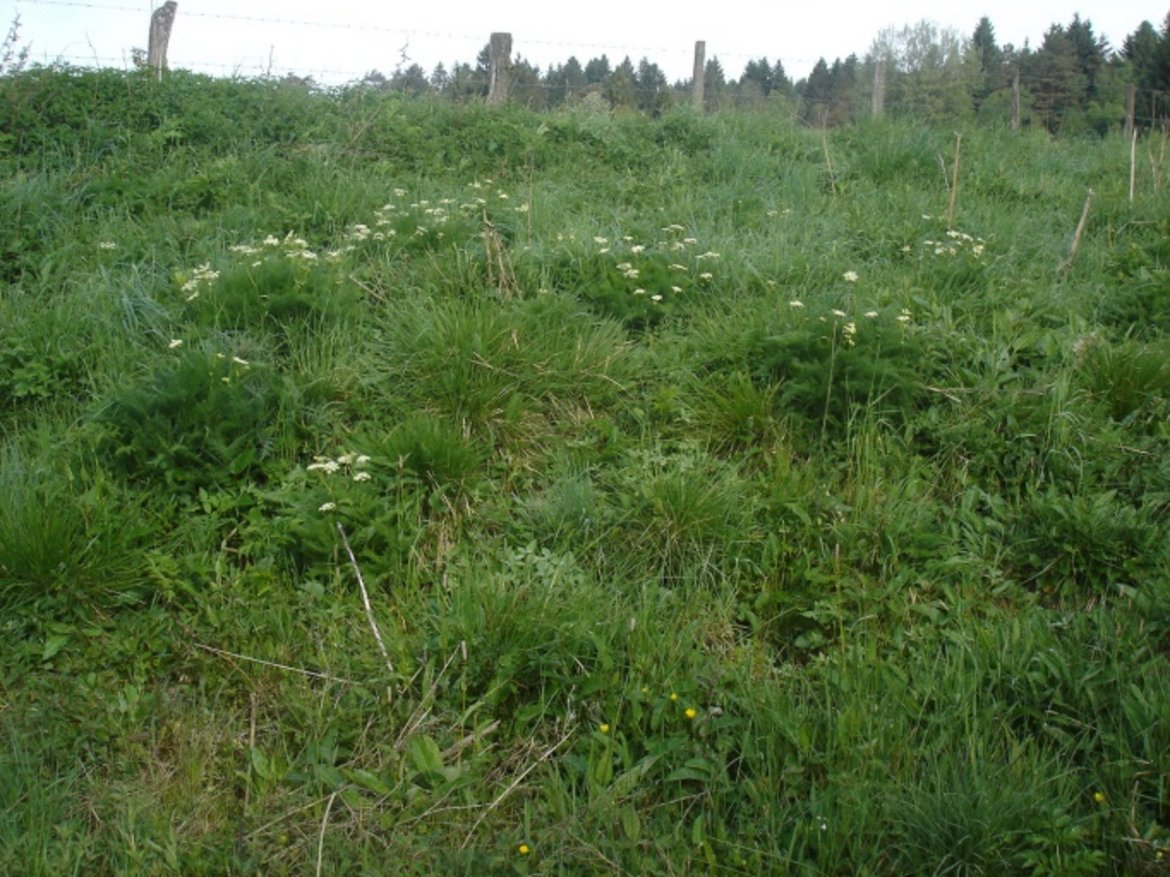Montane hay meadows

Montane hay meadows - 6520 - These hay meadows, typical of the Upper Ardennes, have developed almost exclusively on plateaux at altitudes above 550 m. They originate from (sub-)montane climax beech forests which, when cleared, have allowed the development of dry and wet moorland, and hay meadows have been created in the vicinity of dwellings.
These meadows, with little fertilisation, were mown to produce hay and the regrowth was usually grazed. These grasslands are clearly more mountainous in character than the hay meadows of the Alchemillo-Trisetetum (6510). At present, those that have survived are mainly grazed, thus losing the characteristic species of their flora. What's more, they currently only exist in fragments. The association with Geranium sylvaticum is a fatter variant that takes the form of a tall, closed meadow. The association with Meum athamanticum, a leaner variant, presents a radically different structure, with low, closed vegetation, whose herbaceous stratum is made up of a short, dense lawn of Festuca rubra. It resembles a lean lawn with Nardus stricta, from which it is often derived.
Wherever the topography allowed, there were valley meadows that were particularly prized for their hay production. They were irrigated by watering and were often the only source of food for winter feeding. They were farmed until after the Second World War, and it was not until around 1960 that most of them disappeared. These are permanent meadows that are mown once or twice a year, but may also be grazed at the end of the season. Generally speaking, these meadows originate from forest clearings or agricultural wasteland, generally sown with seeds collected from haylofts, whose initial vegetation has evolved under the influence of manure and late mowing for hay production.
In 2015, at the level of the project's Natura 2000 sites, this habitat represented 206.8 hectares and we aimed to recreate/restore 60 hectares of sub-montane and montane hay meadows.



